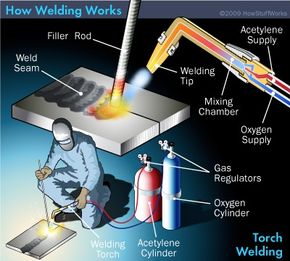Maximizing Your Welding WPS: Strategies for Improved Efficiency and Effectiveness
Maximizing Your Welding WPS: Strategies for Improved Efficiency and Effectiveness
Blog Article
The Ultimate Guide to Welding WPS Procedures: A Detailed Review for Welders
In the detailed globe of welding, Welding Treatment Requirements (WPS) serve as the backbone of making certain top quality, uniformity, and security in welding procedures (welding WPS). As we delve into the numerous elements of a WPS and check out the complexities of credentials and qualification, we will reveal the important function these treatments play in the world of welding.
Significance of WPS Procedures
Comprehending the value of Welding Procedure Specs (WPS) procedures is vital for making sure the high quality and stability of bonded frameworks. WPS treatments work as a roadmap for welders, outlining the needed actions, specifications, and products called for to attain a sound weld. By adhering to WPS standards, welders can make certain consistency in their job, resulting in structurally sound and reputable welds.
One of the key reasons why WPS procedures are essential is their duty in maintaining weld high quality and integrity. Complying with the specified welding parameters and methods described in the WPS aids prevent problems such as porosity, cracking, or insufficient blend, which can jeopardize the toughness and toughness of the weld.

Elements of a WPS
A Welding Treatment Spec (WPS) normally consists of essential parts that information the details needs for executing a weld, making certain uniformity and top quality in the welding procedure. The crucial components of a WPS include important variables such as base metals, filler metals, interpass and preheat temperature levels, welding procedures, securing gases, welding positions, and post-weld heat therapy demands.
Base metals refer to the products being joined, while filler metals are utilized to load the void in between the base metals during welding. The welding process describes the certain strategy to be utilized, whether it's gas metal arc welding (GMAW), shielded metal arc welding (SMAW), or an additional approach. Welding placements specify the orientations in which welding can be carried out.

Certification and Accreditation
Having established the vital elements of a Welding Procedure Spec (WPS), the emphasis currently shifts towards the important facets of certification and certification in welding techniques.

Certification, on the various other hand, is the official recognition of a welder's certifications by an appropriate qualification body or company. Welding accreditations are usually based upon the certain welding procedures, materials, and settings a welder is qualified to deal with. Holding a valid welding qualification demonstrates that a welder fulfills sector criteria and is proficient to do welding tasks to the required specifications.
Producing a WPS
To develop a Welding Treatment Requirements (WPS) that satisfies market criteria, cautious consideration of welding processes, products, and functional parameters is important (welding WPS). The primary step in developing a WPS is to determine the welding process to be used, such as gas metal arc welding (GMAW) or shielded steel arc welding (SMAW) When the welding process is identified, the next critical facet is picking the appropriate products, considering factors like base metal type, density, and joint style. Operational specifications such as welding present, voltage, traveling speed, and shielding gas composition should also be diligently defined in the WPS.

Carrying Out and Checking WPS
Upon wrapping up the comprehensive Welding Treatment Spec (WPS) that thoroughly details welding procedures, materials, functional criteria, and quality control procedures, the focus moves to efficiently applying and keeping an eye on the established treatments. Application entails making sure that all welders entailed in the task recognize with the WPS and follow it meticulously during the welding process. This needs supplying appropriate training and guidance to assure adherence to the defined treatments. Keeping track of the WPS entails continuous oversight to validate that welding activities line up with the recorded requirements. Examinations, testing, and high quality control actions are vital parts of the tracking process to identify any kind of deviations or issues without delay. Normal audits and reviews of the welding procedures assist in keeping uniformity and high quality throughout the job. Effective execution and surveillance of the WPS are critical for guaranteeing the stability, strength, Home Page and safety of the bonded joints, ultimately adding to the overall success of the welding job.
Conclusion
To conclude, understanding and adhering to Welding Treatment Specifications (WPS) is vital for welders to make sure quality, uniformity, and safety in their job. By recognizing the parts of a WPS, acquiring proper certifications and certifications, creating detailed procedures, and executing and checking them properly, welders can boost their skills and effectiveness in welding practices. Sticking Learn More Here to WPS procedures is crucial for creating high-quality welds and conference sector standards.
In the detailed world of welding, Welding Procedure Requirements (WPS) offer as the foundation of making certain high quality, uniformity, and safety in welding operations. The welding procedure lays out the particular strategy to be utilized, whether it's gas steel arc welding (GMAW), secured metal arc welding (SMAW), or one more method.To create a Welding Treatment Specification (WPS) that meets industry criteria, careful consideration of go to this site welding procedures, materials, and functional criteria is necessary. The initial action in developing a WPS is to recognize the welding procedure to be used, such as gas metal arc welding (GMAW) or secured steel arc welding (SMAW)Upon wrapping up the extensive Welding Treatment Specification (WPS) that carefully details welding processes, products, functional parameters, and quality assurance steps, the emphasis moves to effectively implementing and checking the well-known treatments.
Report this page